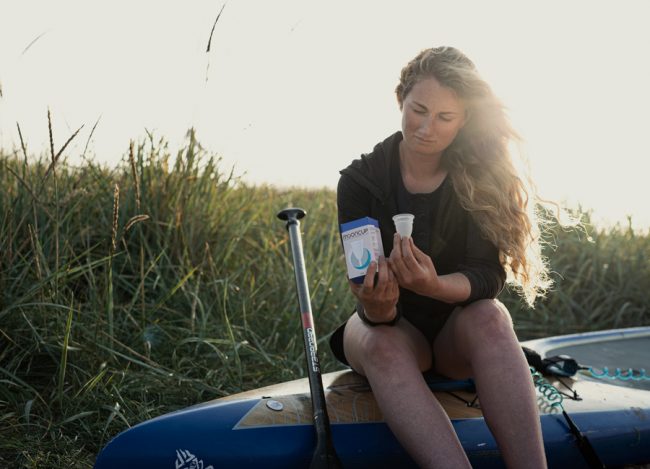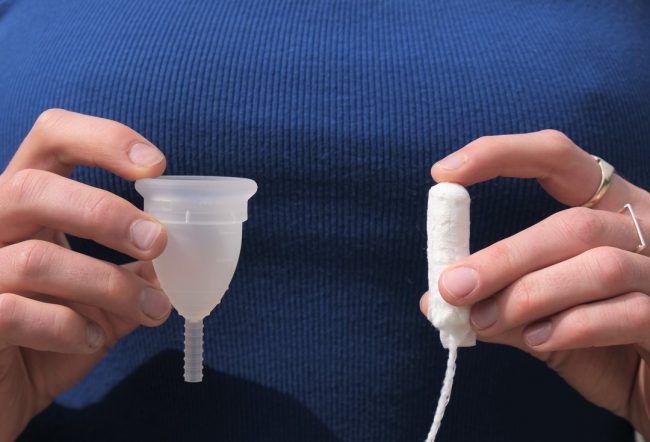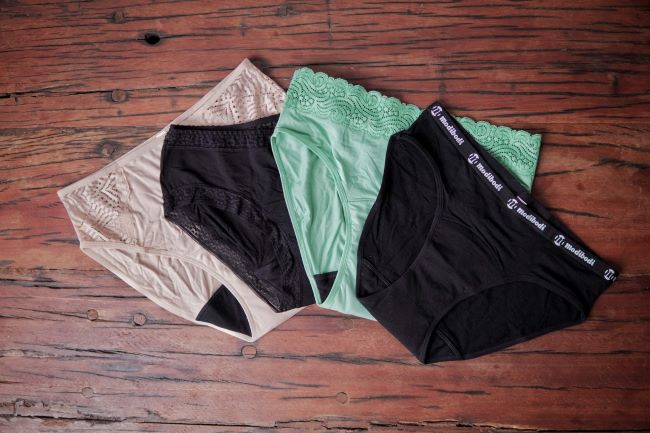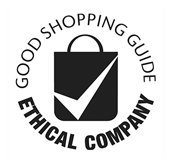Guide to reusable period products: menstrual cups, discs, period pants and reusable pads compared
Are you looking to make the switch to a more planet-friendly period product? Reusable period products are becoming more and more popular. But how to choose the right product for you and your flow? In this guide, we compare menstrual cups, discs, period pants and reusable pads: pros and cons, cost, comfort, convenience and environmental impact.
Which are the best period products for the environment?
Menstrual cups are by far the most environmentally friendly product to use for your period. In one year of usage, the environmental impact of a reusable period cup is only 1.5% of the impact of disposable period products. This means that the environmental impact of a menstrual cup is similar to that of just 20 single-use tampons. And it only costs around 10% of the price!
The environmental impact of reusable period pants and cloth pads is less researched than menstrual cups. However, researchers suggest that when washed in an energy-efficient manner, they also have a lower environmental impact than single-use period products.
You need multiple pairs of period pants or reusable pads to cover your whole cycle, which means a bigger impact on the environment. Some period underwear isn’t always made with sustainable fabrics either. The waterproof layer in the gusset in the underwear and cloth pads is also almost always made of plastic, which is hard or even impossible to recycle.

Reusable pads and period underwear need washing, but the water consumption used for this is still minimal when compared to the production of disposable period products. If you’re looking to minimise the environmental impact of reusable pads or period pants, they should be washed in an energy-efficient way. This means washing at a maximum of 40°C, washing full loads with eco-friendly detergents and line-drying your pads and pants.
Each one of us will use around 11,000 disposable period products during our menstruating life. So, whichever reusable product you decide to go with, you’ll be saving hundreds of single-use tampons and pads from landfill.
Sustainable, reusable period products compared
When the Mooncup® was born in 2002, as the first silicone menstrual cup in the world, reusable period products were unheard of. Fast forward to 2023, and the period product aisle has already changed for the better. Throwaway tampons and pads are no longer our only options. From menstrual cups and period pants to reusable cloth pads; there is now an eco-friendly alternative for every flow and personal preference.
Reusable alternatives if you prefer tampons
If you prefer internal period products, like tampons, the thought of switching to an external product may not sound too appealing. The good news is that if you don’t like the feeling of ‘freer bleeding’, like the convenience of internal products, and worry about your underwear feeling bulkier, there are eco-friendly options available.
Menstrual cups
Menstrual cups, like the Mooncup®, collect rather than absorb your period blood. Because the Mooncup is made from soft, medical-grade silicone, it’s so comfortable you can’t feel it’s there.
The Mooncup menstrual cup holds 3 x more than a regular tampon so it’s a real gamechanger if you’ve got a heavier period. If you do need to change your menstrual cup when you’re out, there is no need to stress about emptying it in a public toilet. Just bring a small bottle of water into the toilet cubicle with you, empty your cup, give it a rinse and reinsert it. If you don’t have any water with you, you can simply wipe the cup with toilet paper, and re-insert it. You can always give your menstrual cup a thorough clean when you get home.

You can wear a menstrual cup for up to eight hours. You only need one Mooncup whatever your flow, so it’s a real money-saver too.
Because the menstrual cup is worn internally, it’s great for swimming and exercise. In fact, we know that many professional athletes, like Team GB Olympian Lauren Smith, swear by their Mooncup®!
Reusable menstrual discs
Less known than menstrual cups, reusable discs are also inserted into the vagina and collect your flow. A menstrual disc sits higher in your vagina than a cup, just below your cervix.
Reusable menstrual discs are made from plastic or medical-grade silicone. The rim of the disc is much wider than that of a menstrual cup, and it can be harder and messier to remove than a cup. While discs usually have a higher capacity than cups, like all internal period products, they should also be emptied every 4-8 hours. Learning to use a menstrual cup or a disc can take a little practice, but as we like to say, once you get the knack, you won’t look back!
The main benefit of a menstrual disc as compared to a menstrual cup is that it can be worn during period sex, although it’s always best to empty your disc first.
If you are opting for a menstrual disc, please make sure you choose a reusable one as many discs on the market are disposable ones.
Reusable alternatives if you prefer pads
Reusable pads and period pants are good alternatives if you only want to wear external period products or have just started your period. While the upfront cost of pads or pants is higher, they are still a more economical option than disposable tampons and pads. They generally last between 2-4 years so can replace hundreds of single use period pads.
Some people like to wear reusable pads or period pants as a backup to tampons or a menstrual cup. They can also be great on those last days of your period when your flow is very light, or if you get any spotting.
Period pants
Period pants are reusable underwear with a high-absorbency fabric sewn into the gusset. Depending on your flow, you’ll need 2-3 pairs of period pants per day. So, you will need around 6-12 pairs of period pants to cover one cycle, depending on how often you do your laundry.
Period pants come in many styles and absorbencies. They are not the cheapest option but can be great for lighter days of your period. Some people get leaks on heavy days and like to use their period pants to double up on products. Pants can also absorb minor incontinence. However, reusable pants or pads don’t absorb any clots.

You should consider changing your period pants when you feel wetness. This is a sign that the pants have absorbed all they’re able to. While emptying a menstrual cup or disc in a public toilet is quick and easy, changing period pants means you will need to take off your trousers or tights to change your underwear. Many period underwear brands sell separate waterproof wet bags for carrying around the used pairs of pants. You should also be prepared to carry around a clean spare pair of pants.
Used pants should be rinsed with cold water and washed at a maximum of 40°C. You can wash period pants as part of your normal wash, but skip the fabric conditioner as it’ll impact absorbency. Pants should never be tumble dried either.
Reusable period pads
Reusable period pads are very much like disposable pads – the key difference being that they are washable, reusable and come with less plastic! Unlike period pants, they are separate from your underwear so changing them doesn’t mean taking your trousers and pants off. Just like with period underwear, you will need several pads to cover your cycle.
The best reusable pads are made from organic cotton, and they come with an absorbent, moisture-wicking gusset which absorbs the period blood. Most cloth pads come with poppers or Velcro to keep them in place.
Many find reusable pads much more comfortable to use than disposable pads, which can contain up to 90% plastic. Reusable pads are also more likely to hold their shape than disposables, making them less prone to leaks.
If you’re just starting your period
Always check with a trusted adult that you know how to use the product and that you’re using the product that is right for you.
You may want to use an external product at first as you get more used to your period. You can consider trying different products over time when it is right for you.
Change your period product regularly. The times we have mentioned are the maximum amount you should leave a product in. All period products need to be changed regularly regardless of how heavy your period is.
| Product | Period pants | Menstrual cups | Reusable pads | Menstrual discs |
| Internal / external | External | Internal | External | Internal |
| Environmental impact | Medium | Low | Medium | Low |
| Max hours can be worn | 4-6 hours | Up to 8 hours | 4-6 hours | Up to 8 hours |
| Cost | £90-180 (for 6-12 pairs) | Around £20-25 | £60-120 (for 6-12 pads) | Around £40 |
| Lasts up to | Up to 2-4 years | Up to 5-10 years | Up to 2-4 years | Up to 5-10 years |
| The main pros | Great for light flow, minor incontinence or as a backup product. Easy to use. | The most cost-effective & environmental option, great for heavy periods, swimming and exercise. | Great for light flow, minor incontinence or as a backup product. Easy to change. | Can be used during period sex, great for heavy periods. |
| The main cons | Bulky feeling, you need several pairs, don’t absorb clots, inconvenience of changing when out and about & having to carry used pair in your bag. | A learning curve when first starting. | Bulky feeling, you need several pads, doesn’t absorb clots, having to carry a used pad in your bag. | A learning curve when first starting, can be messy to remove. |
Ready to make switch to a healthier, greener, cheaper period? Buy your Mooncup here.
Limited edition Mooncup® x WUKA® reusable pads are now available to buy here. They are made for Mooncup using offcuts from WUKA period pants. The medium, heavy & liner absorbency pads are made from organic cotton and are leak-proof, breathable, and soft on the skin. Add the Mooncup to your order and get 10% off your full purchase.
You might also be interested in:
8 reasons to make a switch to the Mooncup menstrual cup
How is the Mooncup® menstrual cup environmentally friendly? 10 reasons
Top tips for a first-time Mooncup® User
How to reduce period pain and cramps
Why am I dry? Vaginal dryness explained
Exercising during your period: the dos and don’ts
How to manage heavy periods






